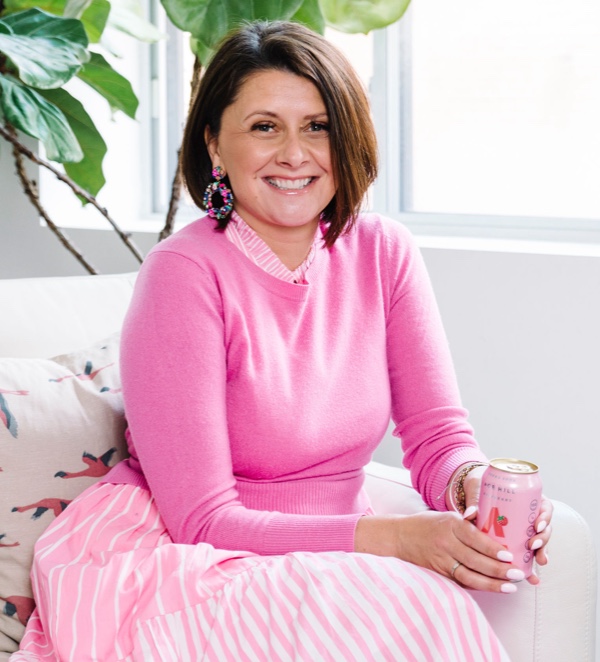A design project doesn’t end at Reveal Day! So how do you wrap up your design projects to finish as strong as you started and leave a strong lasting impression?
I’m sharing three tips for wrapping up your design project that will improve your reputation and relationship with your clients and ensure you finish strong. These three practical steps are impactful ways that cannot be undervalued because you and your clients will walk away safe and satisfied with a smooth, efficient, and thoughtful top-to-bottom experience.
Episode Highlights
- The Importance of Project Wrap-Up: Discover why a strong project finish is crucial for client satisfaction and referrals.
- Top 3 Strategies: Learn Rebecca’s proven techniques for closing out design projects seamlessly, including photography, deficiency walkthroughs, and financial management.
- Avoiding Common Pitfalls: Hear about Rebecca’s personal experiences with project wrap-ups and how to avoid messy situations.
- Post-Project Reviews: Get insights on conducting effective post-project reviews to refine your process for future success.
- Managing Client Expectations: Tips for keeping clients happy and informed throughout the project completion phase.
Episode Resources
- Episode 144 How to run a Post Project Review
- Episode 166 How to run a successful Reveal Day
- Learn more about Power of Process
Read the Full Transcript ⬇️
00:00:00- 00:00:21 Rebecca Hay:
Hey, hey, hey, it’s Rebecca, and you’re listening to Resilient by Design. This is a shorty episode. Today, I want to talk about how you wrap up your design projects. Wrapping up a design project is, in my opinion, sometimes undervalued. We tend to get really excited at the beginning, and if you’re anything like I used to be, by the end, I was so over it.
00:00:21 – 00:00:52
Rebecca Hay:
Like, get me away from these people, get me off their property. I never want to talk to this contractor again. I’m exhausted. I don’t care that there’s a paint chip—get me out of here. I don’t know, maybe you guys can relate, but how you wrap up a project means everything. Before I get too far into this, I just want to remind you, I’ve already recorded a couple of episodes that are really specific to this. So, if you are interested in how to run a post-project review, that’s something I do after the project is completely wrapped up, and I go into detail about that process.
00:00:52 – 00:01:10
Rebecca Hay:
Some people call it a post-mortem, but I think that’s morbid, so we just call it a post-project review. You can find more about it in episode 144 of this podcast. So, if you want to learn about that, go check out episode 144. But today, I want to talk about wrapping things up with the client. This goes beyond just having a successful reveal day.
00:01:10 – 00:01:31
Rebecca Hay:
I’ve talked about reveal days here on this podcast, and I love doing them. It’s something that I teach inside Power of Process, and I think it’s really impactful. It was a real game-changer for my happiness level, to be honest, in my business. It definitely helped with my clients and made everything more fun for me. I talk about that in depth in episode 166, so go check that out as well.
00:01:31 – 00:01:50
Rebecca Hay:
So, episodes 144 and 166—easy to remember. Once you’ve listened to this one, head over to those two. But after you’ve done the reveal day, how do you wrap up the project? I just wanted to share three things that we do that you could implement in your business.
00:01:50 – 00:02:13
Rebecca Hay:
First, we always photograph the project—unless it’s not photo-worthy. And by the way, lots of projects are not photo-worthy. There are many projects I’ve done that you guys have never seen, but the clients were happy, and we generated good revenue. Most of the time, I like to organize a photo shoot, and I pre-organize it, so ideally, it’s the day after the reveal day. I have a YouTube video where I talk about how to organize and run a photo shoot day. You can check that out on my YouTube channel, Rebecca Hay.
00:02:13 – 00:02:30
Rebecca Hay:
I think it’s really important to do a photo shoot because everything is styled to perfection on reveal day. You’ve got everything in the space. Maybe not everything is perfect, but you can always adjust a few things in post-production if needed. Then, you’re out of the client’s house. The big challenge for me in the early days was I wouldn’t come back to do a photo shoot until months later. By then, the clients had settled in.
00:02:30 – 00:02:55
Rebecca Hay:
They’ve got their tchotchkes everywhere; maybe things are already getting damaged or dirty, and you end up having to clean. I remember doing a kitchen photo shoot a month or two after installation, and this family with young kids was just so messy. I remember being on my hands and knees, using Windex to clean the windows of the door and special stainless steel cleaner because the fridge was full of fingerprints. It was so gross and time-consuming.
00:02:55 – 00:03:13
Rebecca Hay:
Then, I had to bring in all the accessories and props again. It’s also annoying because you have to go back into the client’s space when they’re finally rid of you, and here you are again. So, I really like organizing the photo shoot as soon as possible after the reveal day.
00:03:13 – 00:03:34
Rebecca Hay:
The second thing is we do what’s called a deficiencies walkthrough. This is our chance to let the client know that even though the project has been revealed, we’re not disappearing. We will be back to ensure that every little detail is taken care of by the appropriate trades. Of course, that’s because we offer full-service. If this is not relevant to your business, feel free to skip ahead to the next episode.
00:03:34 – 00:03:54
Rebecca Hay:
But this is something that we do. We walk through the project, and it could be a service you offer too if you’re really good at attention to detail. Even if you haven’t implemented or project-managed the whole thing, you could come back to do a walkthrough if you did the design. You’ve got to be careful, though, because if the client has changed the design in your absence, you can’t say, “Well, I said the wall should be there, and you didn’t put it there.” That’s not a deficiency, but you get the idea.
00:03:54 – 00:04:21
Rebecca Hay:
We actually have a system for that, and I share it in my Power of Process. We have a checklist that we follow, and we keep the clients informed when everything is completed. That’s the second thing.
00:04:21 – 00:04:36
Rebecca Hay:
And the third thing we do to wrap up a project is dealing with the finances. No one wants to be chasing clients for invoices months after the project is wrapped. So, it’s really important for us to collect the balance owing on any of the goods before they’re delivered. This includes furniture, lighting, carpets—you name it.
00:04:36- 00:04:56
Rebecca Hay:
Clients must pay the balances on all of that before delivery. Another part of that is helping the client see that we’re upfront about costs. We don’t surprise them with unexpected expenses. We’re not like, “Oops, sorry, the deliveries were $1,000 more than we thought.” That would be a shock. So, we collect a retainer upfront for miscellaneous incidentals.
00:04:56 – 00:05:25
Rebecca Hay:
This can be $2,000, $5,000, or $10,000, depending on the project’s scope. We hold on to that money and use it for miscellaneous incidentals like a small shipping charge or day-of deliveries. That way, at the very end, more often than not, we end up returning some money to the client. Now, it’s not always fun as a business owner to be like, “What? I now have to write a check for $2,000 to my client?” But remember, that money was never ours. And it’s a really nice way to wrap up the end of a project.
00:05:47 – 00:06:04
Rebecca Hay:
We reconcile the retainer and often surprise the clients by returning some money to them. It’s a great way to close out a project. And if you can accurately estimate and collect more money upfront than you need, you will always have this situation. It’s a fun way to end a project. Of course, you want to give a big gift and do all those expected things, but these are the three things that I think actually make a big difference in fully closing out a project.
00:06:29 – 00:06:50
Rebecca Hay:
So, to recap: do the photo shoot, manage the deficiencies with a system, and have a financial system to collect all payments upfront to avoid surprises at the end of the project. Let me know if this was useful. How you end a project is how it’s remembered. No matter how excited clients are at the beginning, it’s how it ends that leaves a lasting impression.
00:06:50 – 00:06:59
Rebecca Hay:
It’s the final taste in their mouth and what will affect whether they refer you to their friends. That’s all, folks. I’ll see you soon.


